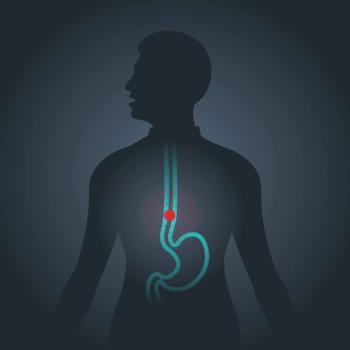
Robot-Assisted Esophagectomy Improved Postoperative Outcomes
Patients assigned to robot-assisted minimally invasive thoraco-laparoscopic esophagectomy had fewer overall, surgery-related, and cardiopulmonary complications compared with open transthoracic esophagectomy, according to the results of the ROBOT trial.
Patients assigned to robot-assisted minimally invasive thoraco-laparoscopic esophagectomy had fewer overall, surgery-related, and cardiopulmonary complications compared with open transthoracic esophagectomy, according to the results of the ROBOT trial (
“Robot-assisted minimally invasive thoraco-laparoscopic esophagectomy (RAMIE) vs open transthoracic esophagectomy improves postoperative outcomes with a lower percentage of postoperative complications,” said Pieter C. van der Sluis, of University Medical Center Utrecht in the Netherlands, who presented the results. “This trial provides evidence for the minimally invasive approach over the open approach, especially the robot-assisted minimally invasive approach.”
According to van der Sluis, open transthoracic esophagectomy “is still considered to be the gold standard for resection for esophageal cancer” throughout the world. This single-center study was designed to see if RAMIE could reduce perioperative complication and functional recovery.
The trial included 112 patients with resectable intrathoracic esophageal cancer who were randomly assigned to RAMIE or open transthoracic esophagectomy. The intention-to-treat analysis included 109 patients. The primary endpoint was a composite of the occurrence of overall postoperative complications.
Patients assigned RAMIE had fewer postoperative complications compared with open transthoracic esophagectomy (59% vs 80%; risk ratio [RR], 0.74; 95% CI, 0.57–0.96; P = .02). The robot-assisted procedure resulted in a median blood loss of 400 mL compared with 568 mL for open transthoracic esophagectomy (P < .001). In addition, patients assigned RAMIE had a lower percentage of surgery-related complications (RR, 0.74; 95% CI, 0.34–0.85; P = .005), pulmonary complications (32% vs 58%; P = .005), cardiac complications (22% vs 47%; P = .006), and a lower mean postoperative pain score.
There was no difference for in-hospital mortality or length of hospital stay between the two study groups.
Robot-assisted surgery resulted in an improved functional recovery at postoperative day 14 (RR, 1.48; 95% CI, 1.03–2.13; P = .038). RAMIE patients also had a better quality-of-life score at discharge (P = .02) and at 6 weeks post-discharge (P = .03).
There was no significant difference in cost of the two procedures; the average cost for RAMIE was €34,892 compared with €39,463 for open transthoracic esophagectomy (P = .07), and oncological outcomes including overall and disease-free survival were equal at a median follow-up of 38 months.
Newsletter
Stay up to date on recent advances in the multidisciplinary approach to cancer.




















































































